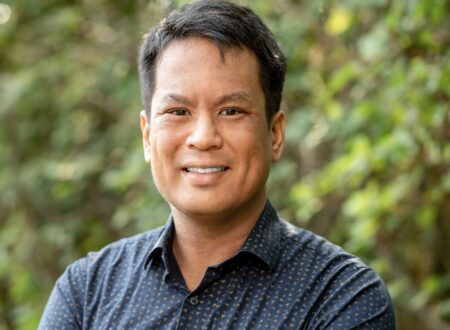By Senwung Luk and Corey Shefman
On May 1st, 2018, Manitoba’ Public Utilities Board adopted recommendations made by the Assembly of Manitoba Chiefs (“AMC”) to create a new electricity rate for First Nations customers on Reserve, and for there to be no increase to that rate for the upcoming year. This is the first time in Canada that a public utility regulator has recognized the unique circumstances of First Nations living on Reserve by ordering a special rate class. The two of us are very proud to have represented AMC in this important victory for energy justice in Manitoba, and we hope it will be the beginning of conversations in other jurisdictions about what fairness in energy prices.
WHO DECIDED WHAT?
In most jurisdictions in Canada, when an electricity company wants to increase the rates paid by consumers, it has to justify that increase to a regulatory body. In Manitoba, that regulatory body is the Public Utilities Board (“PUB”)(Ontario has the similar Ontario Energy Board).
This past winter, OKT represented the Assembly of Manitoba Chiefs at the PUB for Manitoba Hydro’s General Rate Application. In their application, Manitoba Hydro asked the PUB for a 7.9% rate increase, and they anticipated asking for additional 7.9% rate increases for multiple years in the future, with the result that consumer rates would rise by 77% cumulatively over 10 years.
In the end, the PUB found that Manitoba Hydro had not justified its rate increase, and so instead of the requested 7.9% across all classes, they ordered a “3.6% average revenue increase”, which would be recovered from each customer class on a differentiated basis, meaning some classes (like residential) would pay a bit more than 3.6%, while others (such as General Service, or commercial/industrial) might pay less. This differentiated rate system is a change for Manitoba, which had previously had uniform rate increases across all classes.
At the same time, the PUB recognized that energy poverty was a real problem, which both Manitoba Hydro and the Government of Manitoba had failed to address for over ten years. For example, under Manitoba Hydro’s plan, Energy Poverty would have increased from 9.7% to 15.2% in just six years.[1]
The PUB decided that it had the legal jurisdiction to order bill affordability programs, and it did so, by creating a new residential rate class for First Nations on Reserve. This rate class was given a 0% rate increase. The PUB also encouraged Manitoba to create a “comprehensive bill affordability program” which would include other groups, and left the door open to creating additional bill affordability measures itself, if Manitoba or Hydro didn’t do so.
WHY DID THE PUB ORDER A SPECIAL RATE FOR FIRST NATIONS ON RESERVE?
Most importantly for First Nations in Manitoba (and potentially in other jurisdictions as well), the PUB ordered Hydro to charge a discounted rate to on-reserve customers. The PUB took into account a number of points that AMC had put on the record :
- First Nations living on Reserve in Manitoba face disproportionately high rates of poverty, and the highest rates of child poverty in all of Canada.
- Most housing on reserve is not built to the same building code as off reserve housing and is much more expensive to heat.
- Only two of the 63 First Nations in Manitoba have access to natural gas for heating, the rest have to use expensive electric heat.
- Rates of energy poverty (where people spend more than 10% of their income on electricity) are disproportionately high on Reserve, compared to off Reserve.
- Even the CEO of Manitoba Hydro admitted that “electricity rates and the resulting bills place a particularly heavy burden on First nations communities…”[2]
- The values that the Charter of Rights and Freedoms is based on have to be part of the PUB’s decision making process, and those values, especially the value of equality, require that First Nations living on reserve be given a reduced rate.
AMC also successfully argued that reconciliation should be a factor in setting reduced rates for First Nations on reserve.
- Manitoba Hydro is a Crown Corporation, and so has benefited from First Nations’ agreement, in the Treaties, to share the land and water in what is now Manitoba, but First Nations have not got equivalent benefits from Hydro’s use.
- Every dollar earned by Manitoba Hydro comes from power generated on lands and waters in the traditional territories of First Nations. The dams cause massive impacts on the environment and the ability of First Nations to exercise their rights, but the benefits flow to Winnipeg and other settler communities.
Next Steps
This decision is an exciting step towards energy justice for First Nations in Manitoba, and could potentially lead to positive change for First Nations in the rest of Canada. Recognizing the unique and disproportionate ways that energy poverty impacts First Nations living on Reserve will be a crucial test of fairness for energy regulators in the future. First Nations and First Nation organizations would benefit from seeking standing at rate application hearings, and encouraging the decision makers to look at the facts behind the affordability of electricity bills, particularly for First Nations living on reserve.
[1] See AMC/MH II-23. Using the LICO-125, 6% measure, 15.2% of Manitobans would face energy poverty in 2022 if the PUB approved a 3.36% rate increase in 2017, followed by 7.9% rate increases for 6 years and a 4.54% rate increase in the following year.
[2] PUB Order 59-18, Pages 27-28.
Related Posts

OKT Podcast - Overview of Quebec (Attorney General) v Pekuakamiulnuatsh Takuhikan, 2024 SCC 39
Thursday, December 19, 2024
In this episode, OKT lawyers, Eileen Church Carson, Tomáš Jirousek, Senwung Luk and Corey Shefman provide insights on Quebec (Attorney General) v Pekuakamiulnuatsh Takuhikan, 2024 SCC…
Read More...
Court of Appeal for the Northwest Territories Confirms Sahtú Communities Can Manage the Harvesting of Wildlife in Their Territory
Monday, January 20, 2025
The Court of Appeal for the Northwest Territories (the “Court of Appeal”) recently released a decision that confirms that communities in the Sahtú…
Read More...
Manitoba's Seal River Watershed Embarks on a Historic Journey to Become an Indigenous Protected Area
Tuesday, January 30, 2024
There aren’t many truly pristine spaces left in North America, but the Seal River Watershed in Northern Manitoba is one of them. As the homeland of…
Read More...


